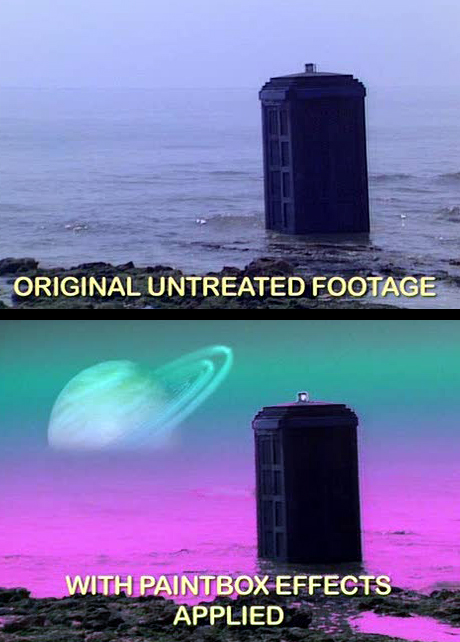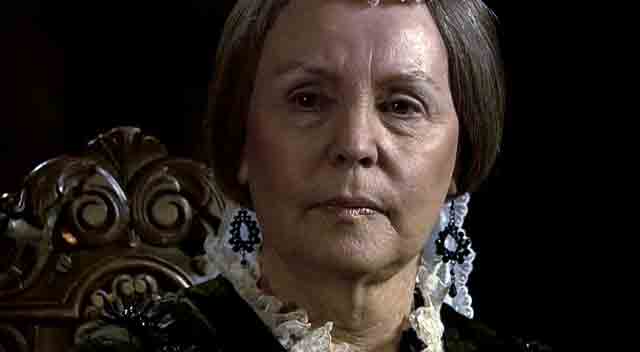Transmat:Doctor Who: Difference between revisions
No edit summary |
No edit summary |
||
| Line 16: | Line 16: | ||
<div class="tr-box two"> | <div class="tr-box two"> | ||
{{thead|Surprising guest star}} | {{thead|Surprising guest star}} | ||
{{surprising guest}} Find out more about the thousands of actors who have been on ''Doctor Who'' by exploring '''[[:category:Doctor Who guest actors|Doctor Who guest actors]]'''. | |||
</div> | </div> | ||
<div class="tr-box one"> | <div class="tr-box one"> | ||
Revision as of 19:55, 11 October 2013
The Ark in Space was the second story of Season 12 of Doctor Who. It was the Fourth Doctor's first full, post-regenerative story. It proceeded from a mild-cliffhanger at the end of Robot, showing what happened after Harry Sullivan climbed into the police box in UNIT's laboratory. It importantly established the location of Nerva Beacon, which would be the narrative lynchpin of the season.
Ark had a somewhat tortuous scripting process, having slipped past two writers before its scripts were finally accepted. Both Christopher Langley and John Lucarotti tried and failed to write a script about a space station for season 12. Of the two, Lucarotti came closest. However, because he then lived on a boat anchored in the Mediterranean — and there was a postal strike afflicting Corsica — Lucarotti was essentially incommunicado to script editor Robert Holmes. It was impossible for Holmes to conduct timely consultation with the Doctor Who veteran. Lucarotti was paid fully for his work, and Holmes undertook a page one rewrite, retaining only the central conceit of Lucarotti's tale.
Despite its difficult birth, the story won kudos from the BBC Wales production staff. Russell T Davies once called Ark his favourite storyline of the 1963 version of Doctor Who. Steven Moffat considered it the best Fourth Doctor story, while Barnaby Edwards confessed to being "petrified of the Wirrn" as a child. Tom Baker himself has also stated that, of all the stories he'd filmed, The Ark in Space was his favourite.
Think Doctor Who is just for boys? Don't you believe it. Not only was the show's very first producer a woman, but it would never have come back without the fierce advocacy of Jane Tranter and Julie Gardner. Considering her importance to Doctor Who it's somewhat ironic that Tranter's only on-screen credits are for Torchwood: Miracle Day. But Gardner, her "partner in crime", is tied only with Russell T Davies as the most prolific producer in Doctor Who history.
Find out more about the thousands of actors who have been on Doctor Who by exploring Doctor Who guest actors.
The careers of the Fifth, Sixth, Seventh and Eighth Doctors are significantly longer in audio than on television. Check out their latest works at category:2024 audio stories
Officially, only The Lodger has been explicitly adapted from a comic strip — also called The Lodger.
However, several stories have clearly taken material from comic strips — often those in Doctor Who Magazine. The Shakespeare Code contains a good amount of material from A Groatsworth of Wit, and the notion of the Doctor absorbing the time vortex in order to spare a companion was explored in both The Parting of the Ways and The Flood.
Donald Baverstock was the BBC executive who set the the wheels in motion that eventually led to the creation of Doctor Who. Essentially the original commissioner of the programme, he hired Sydney Newman and later imposed a sense of financial responsibility upon producer Verity Lambert.
But Baverstock wasn't the only BBC executive to have a profound impact on the development of Doctor Who. Make sure you read about Lorraine Heggessey, Mark Thompson, Danny Cohen, George Entwistle, Tony Hall, Shaun Sutton, Sydney Newman and others.- 1967 - Pre-filming for The Enemy of the World began at Ealing Studios. (TCH 11)
- 1968 - Location filming for The Krotons began at Pyx Granite Quarry. (TCH 13)
- 1969 - A storyline The Shadow People was submitted by Charlotte and Dennis Plimmer to the Doctor Who production team to replace the hole in the production schedule created when The Mists of Madness was cancelled.
- 1972 - Location filming The Three Doctors took place. (REF: Doctor Who The Handbook: The Third Doctor)
- 1981
- Studio filming for Earthshock took place. (REF: Doctor Who The Handbook: The Fifth Doctor)
- Studio filming for additional scenes for Kinda took place at BBC Television Centre studio 8. (REF: Doctor Who The Handbook: The Fifth Doctor)
- 1994 - The BBC Radio 2 audio story The Ghosts of N-Space was recorded at Maida Vale 6.
- 2005 - The Big Finish audio story The Settling was recorded at the Moat Studios.
- 2009 - The Big Finish audio story The Emperor of Eternity was recorded at the Moat Studios.
- 2010 - The Big Finish audio story Binary was recorded at the Moat Studios.
- 2021 - Big Finish announced details on the audio anthology Silver and Ice.
- 1973 - Part five of the TV Comic story Nova was published.
- 1979 - Part three of The Creature from the Pit premiered on BBC1.
- 1983 - DWM 83 was published by Marvel Comics.
- 1988 - DWM 143 was published by Marvel Comics.
- 1993 - DWCC 13 was published by Marvel Comics.
- 2004 - The Nuclear Option was made available for free on the Big Finish Productions website two weeks before the rest of Short Trips: 2040 was released.[1]
- 2005 - DWM 363 was published by Panini Comics.
- 2008 - Part two of The Mark of the Berserker premiered on CBBC.
- 2010
- Defending Bannerman Road was published online.
- The First Doctor Box Set and Graceless were released by Big Finish.
- 2011
- Children of Steel and Judgement Day were released by AudioGO.
- DWA 243 was published by BBC Magazines.
- 2012
- The Shadow Heart, Dark Eyes and Return of the Rocket Men were released by Big Finish.
- Circa this date, Top Trumps Card Game & Dalek Collectors Tin was released by Winning Moves UK Ltd.
- 2013 - Toby Hadoke's Who's Round 37 was released online.
- 2016
- The Ravelli Conspiracy was released by Big Finish.
- The audiobook of Doctor Who and the Day of the Daleks was released by BBC Audio.
- DWA15 20 was published by Panini Comics.
- 2020 - The audio anthology Shadow of the Daleks 2 was released by Big Finish.
- 2022 - DWM 584 was published by Panini Comics.
- 1902 - Actor Valerie Taylor was born.[2]
- 1931 - Actor Don Henderson was born.[3]
- 1936 - Actor Terence Lodge was born.[4]
- 1943 - Actor William Hoyland was born.[5]
- 1955 - Actor Clare Higgins was born.[6]
- 1960 - Writer Neil Gaiman was born.[7]
- 1963 - Actor Hugh Bonneville was born.[8]
- 1971 - Writer Holly Black was born.[9]
- 1972
- Composer Francis Chagrin died.[10]
- Actor Rosemary Johnson died.[11]
- 1975 - Director of photography Stephan Pehrsson was born.[12]
- 1976 - Actor Jeremy Radick was born.[13]
- 1989 - Actor Clyde Pollitt died.[14]
- 1990 - Actor Dudley Jones died.[15]
- 1991 - Actor Tutte Lemkow died.[16]
- 1993 - Actor Jocelyn Birdsall died.[17]
- 2006 - Actor Chubby Oates died.[18]
- ↑ Take a (Short) Trip to 2040.... Big Finish, via Internet Archive. Retrieved on 8 December 2004.
- ↑ Aveleyman
- ↑ Aveleyman
- ↑ Aveleyman
- ↑ Aveleyman
- ↑ Doctor Who Guide
- ↑ Neil Gaiman. Encyclopaedia Britannica. Retrieved on 10 September 2019.
- ↑ BBC Music Website
- ↑ People PIll
- ↑ Discogs
- ↑ IMDb
- ↑ IMDb
- ↑ Doctor Who Guide
- ↑ Doctor Who Guide
- ↑ Aveleyman
- ↑ Find a Grave
- ↑ Aveleyman
- ↑ Aveleyman



